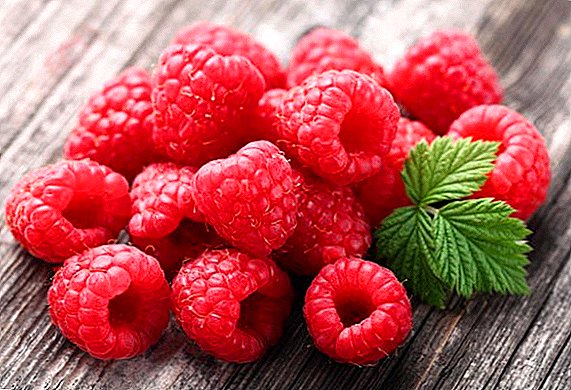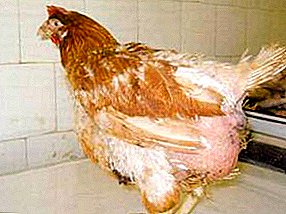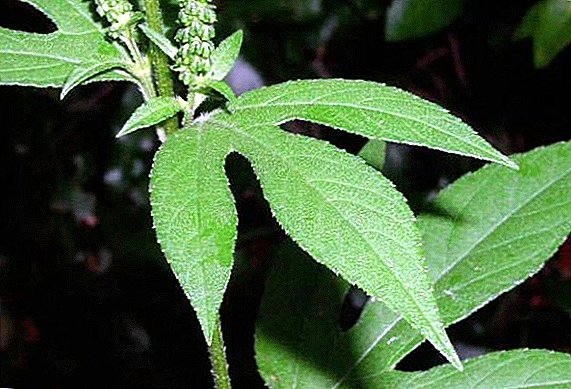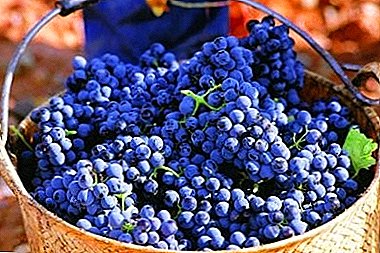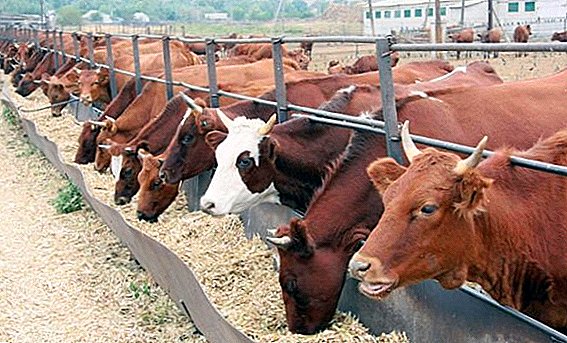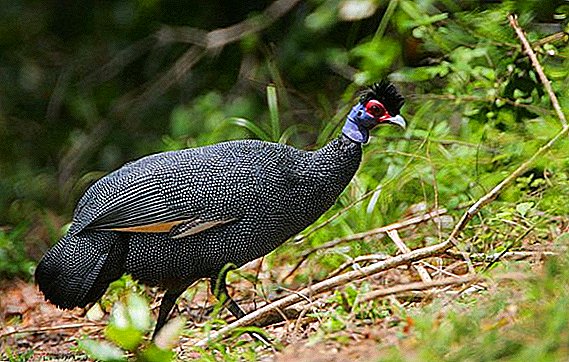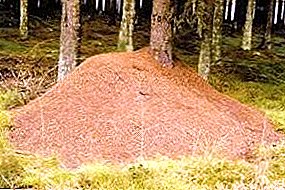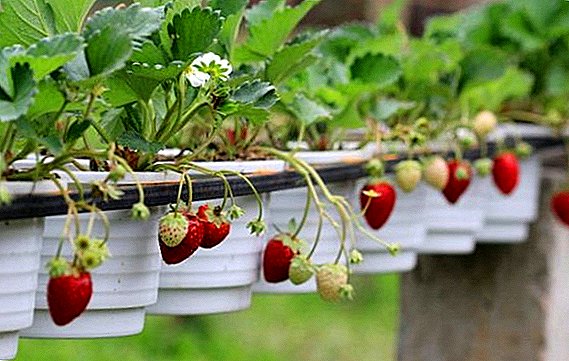 Amppelnaya strawberry is a special kind of berry, represented by several varieties.
Amppelnaya strawberry is a special kind of berry, represented by several varieties.
The plant can grow and bear fruit in vertical supports or fall down.
Amppelnaya berry is used not only for consumption, but also as a natural decoration.
Features of ampelous strawberry
Unlike other varieties, the ampelous strawberry blossoms and bears fruit not only the plant itself, but also its antennae, and at the same time. Rehabilitative varieties of this species produce crops several times per season, and at home - even in December. It can be called a curly variety, conditionally, because the whiskers do not twist the props, and they need to be tied.
Amppelnaya strawberry feels great and gives a good harvest in low light conditions, so many grow it in apartments and greenhouses, harvesting year-round, combining several varieties. For premises more suitable remontant varieties, as they can bloom and bear fruit year-round.  It should not be forgotten that the berry needs well-fertilized soil, it needs to be transplanted every 2-3 years, otherwise it will shred and will not be different from the wild berries. The rest of the care is the same as for other types of strawberries.
It should not be forgotten that the berry needs well-fertilized soil, it needs to be transplanted every 2-3 years, otherwise it will shred and will not be different from the wild berries. The rest of the care is the same as for other types of strawberries.
Landing technology
Before planting, seedlings should be cut off the antennae and process the roots in a solution of salt and copper sulphate. Prepare a solution based on 10 liters of water - 3 tbsp. spoons of salt and 1 tsp of vitriol. Plant roots are immersed in the composition for 10-15 minutes.
Prepare a strawberry bed in the usual way: the earth is cleared of weeds, dug and fertilized - mineral and organic. The distance between seedlings should be 30 cm, and in the aisle - at least 50 cm. In order for the seedlings not to freeze over the winter, it should be covered with sawdust and film.
Usually our summer plots are small in size, and I want to place maximum plants on them. One of the outputs - the pyramid for berries. This bed will look interesting and save a lot of space. The place for the berries is sunny. For the pyramid fit bags, trellis, trays and even car tires. 
How to choose seedlings
As a result of surveys, it turned out that domestic varieties of ampelous strawberries: "Finland", "Remontant" and "Queen Elizabeth 1, 2" are the most suitable for growing.
From unpretentious plants to the conditions of detention can be called two varieties: "Geneva" and "Alba". Variety of curling strawberries "Ostara" fruits even in the autumn. Among the varieties of foreign breeding, Elsanta has proven itself well. The berry tastes sweet with a slight sourness, large and richly red. True, during the winter this variety may die.  Resistant to frost is the "Eros". Orange-red fruits look beautiful against the background of a soft green rosette. Berries varieties "Crown" have a delicate, soft and sweetish taste. The plant is resistant to sudden changes in weather conditions. But the sweetest berry from the Honey variety.
Resistant to frost is the "Eros". Orange-red fruits look beautiful against the background of a soft green rosette. Berries varieties "Crown" have a delicate, soft and sweetish taste. The plant is resistant to sudden changes in weather conditions. But the sweetest berry from the Honey variety.
Important! Seedlings of ampelous strawberries should not be planted next to the garden. Between beds with different varieties there should be a distance. Climbing plants can be planted at the beginning, and the garden queen - at the very end of the plot.
When and where to plant the berry
In the first half of February, ampelous strawberry seed reproduction is carried out. It is necessary to pour the fertile substrate into the bowls, distribute the seeds over the surface, cover with glass and put it in a refrigerator for 3-4 days. After that, move the landing in the heat (up to 24 degrees), make additional doshochivanie. Shelter is removed when the seedlings have 3 leaves each, then lower the temperature to 18 degrees so that the seedlings do not stretch out.
A month later, the seedlings are pickled into separate pots, and after rooting, they are transplanted into flowerpots or hanging pots. The height of the structure should not exceed 2 meters, otherwise the care of the strawberry will be difficult. A drainage layer of 15 cm from crushed stone, gravel or pebbles is poured into the structure at the bottom, then fertile soil is filled up, watered well and given time to settle. When all the voids are filled, the soil will settle, the missing part will be filled with soil. Before planting, the roots of the strawberry strawberry are dipped in a clay mash. Strawberries can be taken out on the street only after the period of return frost and a large temperature difference. Strawberries love sunlight and do not tolerate wind, so the design must be installed in a sunny, sheltered from the wind place.
Important! If poor land is chosen for planting, the strawberries will become shallow and will eventually become ordinary wild strawberries.
Scheme of planting seedlings in open ground
Growing an ampelous strawberry is quite troublesome, because the culture is capricious, and before planting it in open ground, it is necessary to properly prepare the beds. It depends on what the yield of strawberries, care, cultivation, size and abundance of berries. Place for planting should be chosen on the southwestern, well-ventilated, sunny part of the site. Strawberries love heat and light, the sweetness and juiciness of the berries depends on it.
Check out the list of strawberry varieties: "Queen Elizabeth", "Elsanta", "Albion", "Chamora Turusi", "Marshal", "Malvina", "Kimberley", "Zeng Zengana".It is very important that the place for the beds is a bit on a hill, ideal for growing high beds. When water stagnates during the ripening period, the berry can seriously damage fungal diseases, therefore it is recommended to drain the soil under a bed of broken brick or pebbles. The occurrence of groundwater should be at the level of 80 cm, the acidity level of the soil should not exceed 5.7-6.2 pH.
Did you know? Although strawberries are sweet berries, they contain almost no sugar. That is why Hollywood beauties often sit on a strawberry diet and argue that this way you can lose 2.5 kg in 4 days. Due to the low sugar content, strawberries are recommended even for people with diabetes.
How to care for the berries
If watering for strawberries is not so important, then it is important to keep an eye on top dressing throughout the summer season.
Amppelnaya strawberry is demanding, care will also be in timely trimming of the antennae, covering the bed for the winter if necessary, will take a lot of time and effort, but it will certainly bring you a bountiful harvest.  It is necessary to properly prepare the soil for planting, observe the rules of growing the crop and provide it with the best conditions for growth, then the berries will be sweet and large.
It is necessary to properly prepare the soil for planting, observe the rules of growing the crop and provide it with the best conditions for growth, then the berries will be sweet and large.
Watering, weeding and loosening the soil
As during the ripening of berries, and after harvesting, it is important that the soil in the garden is constantly wet - this will ensure the rapid growth of young foliage.
Knowing how to care for strawberries after harvesting will help increase the fruiting plants for the next season. After cutting for irrigation bushes need to use warm water.
Watering is carried out at sunset or in the morning to avoid sunburn. After irrigation, the soil is loosened and mulched.
If you produce a constant watering of strawberries, despite the lack of fruit, then in the spring it will give a lot more flowering buds. 
Fertilization
During the budding period, young strawberries are fed with potash fertilizers (potassium sulfate, potassium magnesia, potassium chloride) according to package instructions. To increase the yield of the plant is sprayed with boric acid. An adult plant is fertilized in early spring with the introduction of nitroammofoski. During flowering, potassium nitrate, chicken droppings or wood ash are introduced. After harvesting, fertilized again with nitroammofoskoy. In late summer, the plant is fertilized with urea for better harvest next year.
Strawberry mulching
Mulching of the berries is carried out in the spring, to avoid contact of the peduncles with the ground, and in late autumn, in order to protect them from frost.
Organic mulch (compost, humus, cut grass, manure) improves microbiological indicators and soil structure. Inorganic mulch (stone, granite, crumb, black and colored polyethylene). Its benefits are safety. Does not rot, protects against fungi, weed germination and external influence.
Learn more about the products that will be useful to you for the care of the garden: "PhytoDoctor", "Ecosil", "Nemabakt", "Thanos", "Omayt", "Oksihom", "Ammofos", "Trichodermin", "Calypso" , "Fundazol", "Prestige", "Etamon".
Pest and disease treatment
Every experienced gardener knows how to process strawberries after cutting the leaves to protect them from insects. The first prevention of plants is carried out during the growing season before flowering. When all the strawberries are harvested, processing after fruiting is carried out again, no later than mid-August. Usually, Actellic is used to protect plants (15-20 ml per 10 liters of water, if there are many pests, the procedure can be repeated after 8-10 days). The tool effectively cope with strawberry transparent mite, eating young leaves.
Spraying with iodine solution (5-10 drops per 10 liters of water) will save from weevil. Processing berries after harvesting against pests includes complex fertilizer with urea in the proportion of 30 g per 10 liters of liquid or infusion: 2 tbsp. l nitroammofoski, 10 liters of water and 1 cup of ash.  After harvesting, as well as to reduce the incidence of disease, it is better to use "Fitosporin" (against fungal diseases in the proportion of 1 tablespoon. Of a liquid solution per 10 liters of water per 2 square meters of land) or "Fitop".
After harvesting, as well as to reduce the incidence of disease, it is better to use "Fitosporin" (against fungal diseases in the proportion of 1 tablespoon. Of a liquid solution per 10 liters of water per 2 square meters of land) or "Fitop".
Trimming whiskers and leaves
Strawberries are propagated by seeds, mustache seedlings and the separation of the bush. The most popular method is mustache seedlings.
In the uterine bushes leave the strongest mustache to form an outlet. 2 weeks before planting, the whiskers that connect the sockets to the uterine bush are cut off. Use uterine bushes for growing mustache can be up to 3 years. Pruning leaves in summer helps protect strawberries from diseases and pests. The procedure is carried out dry in the morning or in the evening with a sharp shears. Leave a growth point, stems and petioles up to 10 cm long. Only overgrown mustache and leaves are removed. For winter, strawberries should go away after pruning, leaving only young shoots. Strawberries, supplemented with proper pruning, are less sore and grow better.
Did you know? In Belgium, there is a whole museum dedicated to this berry. In the Middle Ages, strawberries were considered a symbol of peace and prosperity, so it was served only at important feasts for nobles and overseas guests.
How to prepare strawberries for winter
Strawberry bushes require shelter for harsh (-20 degrees) and winters with little snow in order to avoid freezing of the roots. Cover begin at the onset of regular frosts, if it gets warmer, then the shelter is removed to avoid vypryvaniya. Small frosts help to harden the plant.  As a covering material suitable: pine spruce, hay, straw, dry leaves, agrofibre, spunbond, agrotex.
As a covering material suitable: pine spruce, hay, straw, dry leaves, agrofibre, spunbond, agrotex.
Strawberry ampelous: advantages and disadvantages
There are no obvious deficiencies in the strawberry strawberry. But the benefits of the variety are many:
- decorative value;
- grows well in low light conditions;
- does not need enhanced fertilizing with mineral and organic fertilizers, but planting should be done in a nutrient substrate;
- due to repairing, the plant bears fruit until autumn;
- large, sweet and fleshy berries weighing up to 30 g;
- the possibility of growing on the trellis, which prevents the appearance of rot;
- high yield.
 Competent care and properly selected varieties will help you get a decent harvest of sweet berries.
Competent care and properly selected varieties will help you get a decent harvest of sweet berries.

